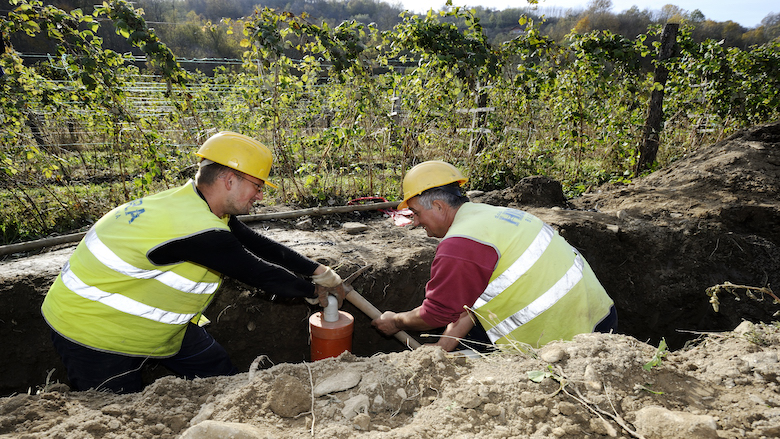Agriculture has served as an integral driver of human health and livelihood in Bosnia and Herzegovina (BiH). Data from 2012 show that the sector accounted for nine percent of the country’s GDP, employed over one fifth of its workforce, and employed many individuals with lower incomes.
But the sector also had its fair share of problems, thus making its revival all the more important. Its contribution to GDP had fallen from 15 percent in 2001 and was further burdened by an increase in irregular rainfall patterns from 1961-2010, as well as an increase in temperature. These weather changes thus contributed to a drought in 2012 that ruined 70 percent of the country’s corn and vegetable crops and wiped out US$1 billion in agricultural production, as well as flooding in 2014 that led to losses equivalent to 15 percent of GDP – a significant portion of which was related to agriculture.
Moreover, conflict and privatization from the 1990s left many irrigation systems underutilized and unusable. And while BiH had an irrigation potential of 285,000ha, roughly only 4,700 ha were irrigated in 2012 – negatively impacting the rural economy.
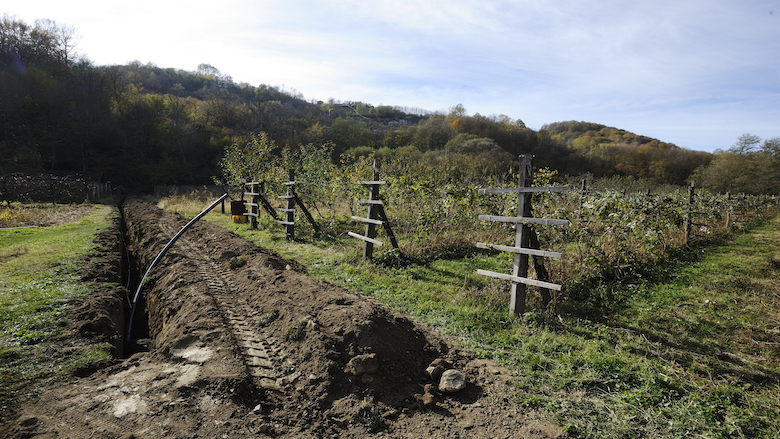
Nedeljko Mladenovic, who served as Bratunac Municipality Mayor from 2001-2020, said that this had an impact on raspberry production in his city. “We developed our own nursery to get high quality seedlings. However, up until now our biggest issue as a result of climate change was irrigation,” he said. “We have plenty of water in the vicinity of our farms, but what we lacked was an organized irrigation system.”
This was an area that undoubtedly needed improvement, and one in which the World Bank was well suited to offer assistance.
In 2012, the World Bank’s International Development Agency (IDA) provided a credit of SDR 25.8 million (US$40 million equivalent) for the BiH Irrigation Development Project (IDB) - which aimed to improve the performance of irrigation schemes and irrigation institutions to support agricultural producers in the project area. To do this, project components included investments for irrigation and drainage works/equipment; the development of operation and maintenance (O&M) arrangements for facilities, irrigation service fee determination, collection and management; and project implementation support for safeguards, audits, procurement, office and mobile equipment, and other services.
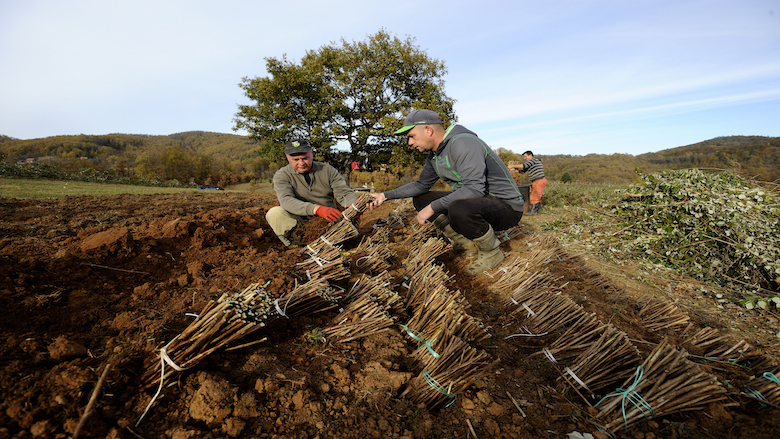
Mladenovic, for his part, is satisfied with the project’s impacts. “The quality of works is good, and our farmers are particularly satisfied that we are perhaps the first in Bosnia and Herzegovina and the broader neighborhood to receive such a good and high-quality irrigation system,” he says.
Importantly, the data also supports Mladenovic’s claims, as the project produced meaningful results both for BiH’s irrigation and agriculture sectors, and the people whose lives depend on them. This includes the following:
- A total of 10,055ha were provided with new and improved irrigation or drainage services. Moreover, the project helped 21,406 project beneficiaries – 31.5 percent of whom were women.
- Fifteen end-user O&M agreements were signed and adopted, which will help reduce tail-end water distribution inequities and improve institutional capacity.
- Provided staff from the Ministries of Agriculture, Forestry and Water Management (the project implementor), as well as those from relevant cantons/municipalities, with knowledge and experience in the technical design and construction of irrigation schemes.
- Increasing resilience to weather shocks and improving agricultural productivity, thus contributing to improved crop yields and increased incomes.
In Bratunac, the irrigation system resulted in large numbers of laborers being hired on plantations for hoeing and harvesting operations, an increase in the number of registered farms, and the creation of preconditions for the development of rural tourism on farms and in areas along the Drina River. Companies in Bratunac that are involved in raspberry growing activities specifically have witnessed more workers being engaged in the purchase of raspberries and their processing in cool-storage facilities, more farmers and producers and new agricultural cooperatives, and increased tax inflows due to higher turnover in raspberry production and sales.
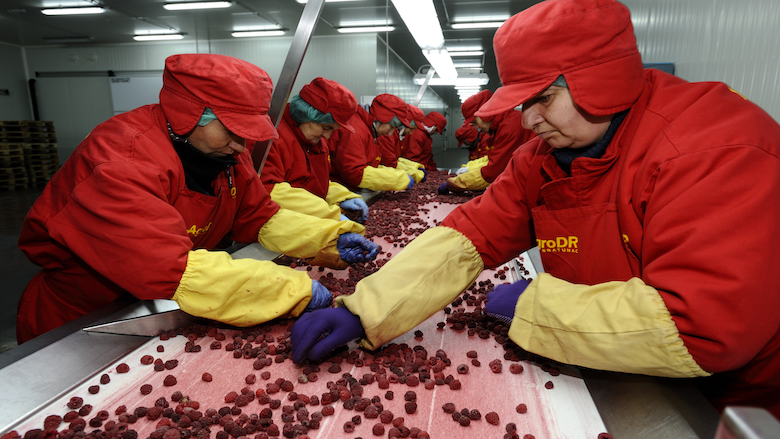
Aside from Mladenovic, those associated with a raspberry nursery in the area are also impressed with the project’s results. “This year, raspberry quality was much higher compared to the previous one,” nursery agronomist Aleksander Stevic said in 2017. “The number of raspberry producers has been growing significantly. It is encouraging that these are all younger people,” he adds.
Marina Jovanovic, the director of the nursery, noted how irrigation is much more accessible to farmers in the area than it used to be. “Under the World Bank project, our Municipality organized full irrigation throughout the entire municipality, thereby facilitating irrigation for many farmers,” said Jovanovic. “We hope soon to get water and that next year, both we and Bratunac municipality would have the entire territory irrigated and that everybody would be satisfied. Fertilizing and protection would be easier for everybody - it would be easier to work than it used to be.”
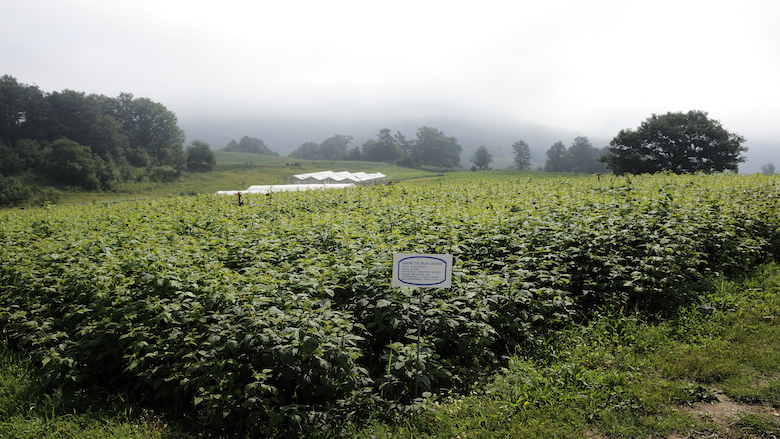
In potentially expanding this project and implementing similar ones, it will be important to (i) consider agricultural value chains when making site selections; (ii) select context specific designs/intervention options at project sites; build local partnerships into implementation arrangements; (iii) include on-farm improvements, such as secondary and tertiary systems, in irrigation project designs; (iv) ensure that institutional arrangements for the management of schemes are flexible, and adopt approaches tailored to municipal characteristics; and (v) develop a policy or master plan to guide investments in agricultural water.
But while some lessons from this project can readily be applied elsewhere, it is clear that the IDB serves as a model for increasing irrigation and thus revitalizing the agriculture sector so that farmers, consumers and economies can both survive and thrive.
